
The historic city of Trier is full of Roman monuments and architectural wealth. It is known for its history dating back over 2,000 years. Trier’s UNESCO World Heritage includes eight monuments. Six Roman monuments – including the famous Porta Nigra, an impressive Roman gate that is a testament to Trier’s antiquity. And the amphitheater, where gladiator fights once took place, additionally introduces you to the fascinating history of the city. An impressive collection of Roman ruins such as the Baths of the Empire and the Basilica of Constantine are testament to the power of the Roman Empire. It’s worth stopping to admire the carefully crafted mosaics and statues that have stood the test of time.

The Hauptmarkt, the main square of Trier, is a bustling place where you can see local products, crafts and souvenirs at colorful stalls. Art lovers will find solace in Trier’s numerous galleries and museums. And the Karl-Marx-Haus offers a look at the life of the famous philosopher and revolutionary who was born in Trier. The Mosel River that flows through Trier gives you the opportunity to relax on a boat trip and admire the wonderful landscape of the region.
Location
Trier is the oldest city in the country, located in the western part of Germany, located in the picturesque Moselle Valley (port on the Moselle). Near the border with Luxembourg. Trier, the ancient capital of Rome, boasts that it was inhabited for 1,300 years before the arrival of the Romans.
1. Porta Nigra
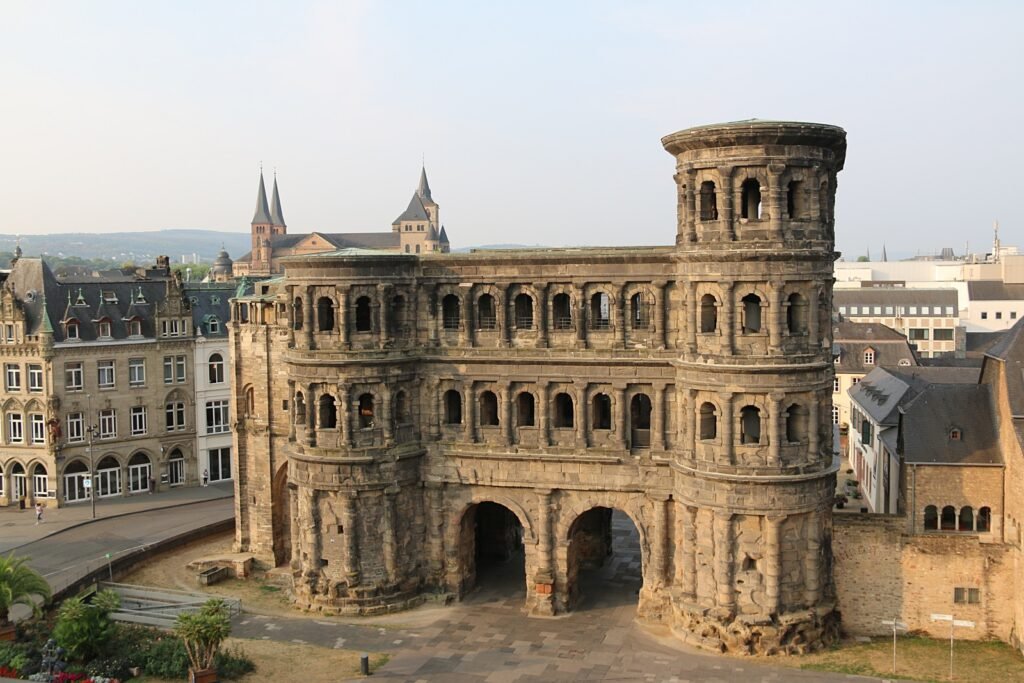
The Porta Nigra is the symbol of Trier. As one of the best-preserved Roman gates, it is part of the UNESCO World Cultural Heritage. The Romans built Porta Nigra with over 7,000 stone blocks in 170 AD. Porta Nigra (Latin: black gate) has had this name since at least the Middle Ages, although the origin of the name has never been definitively established.
Today, Porta Nigra is home to the Roman city’s central information center. Those who wish to visit Porta Nigra can do so on their own on most days. But it’s also worth choosing one of the exciting adventure tours in Trier, during which a centurion will take you on the trail of the secrets of Porta Nigra.
2. Saint Peter’s Cathedral in Trier
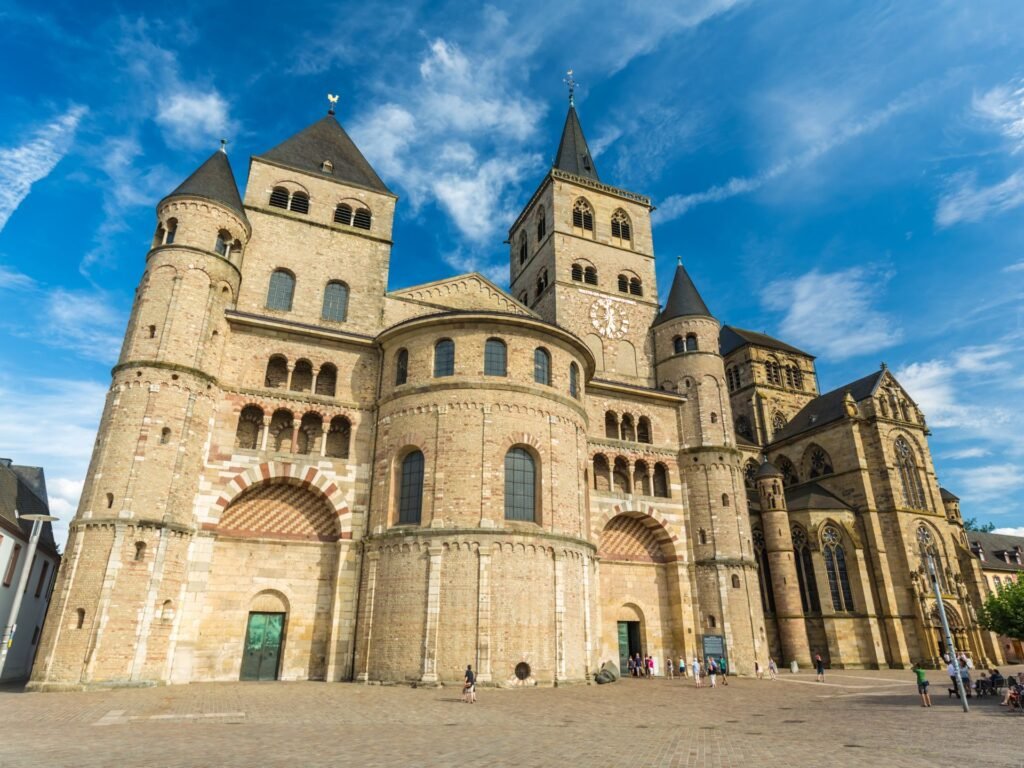
The Cathedral Church of St. Peter in Trier is the oldest episcopal church in Germany and has been a UNESCO World Heritage Site. 1700 years of religious, architectural and artistic history as well as all European stylistic epochs since antiquity are united in it.
3. Church of Our Lady in Trier
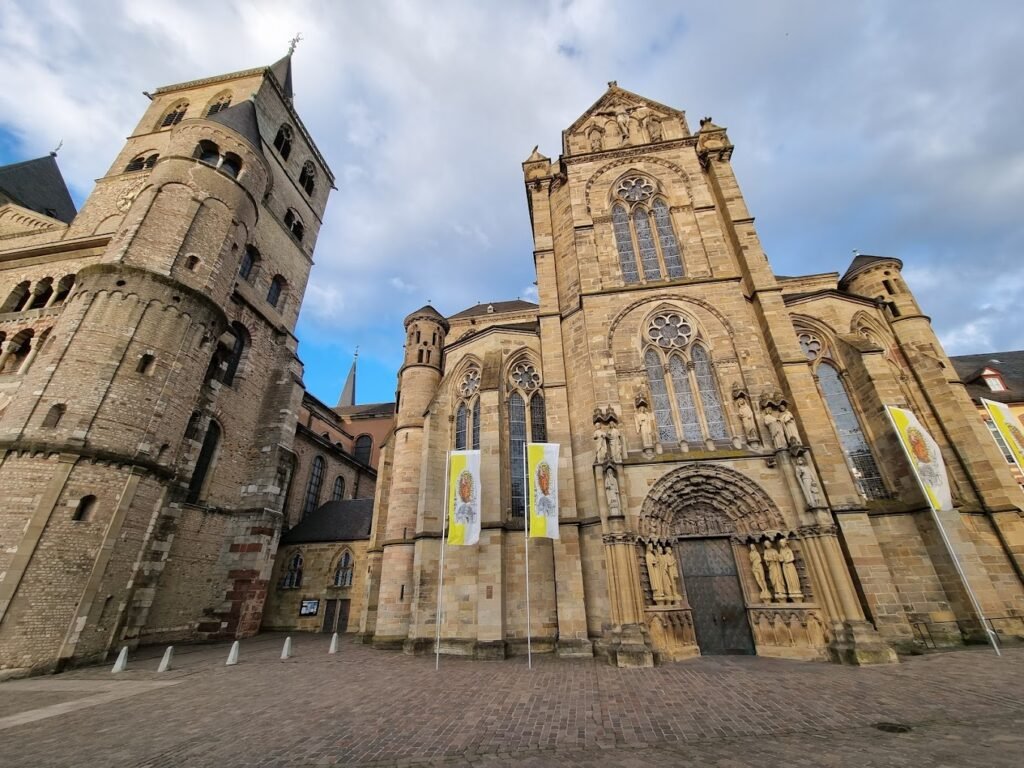

The Church of Our Lady (Liebfrauenkirche) goes all the way back to the year 326 A.D. At this point in time, the Emperor Constantine commissioned the construction of the double church structure, consisting of Trier Cathedral (Trierer Dom) and the Liebfrauenkirche, along with other places of worship. The Cathedral of St Peter and Church of Our Lady located just next to each other .
4. Market Square In Trier
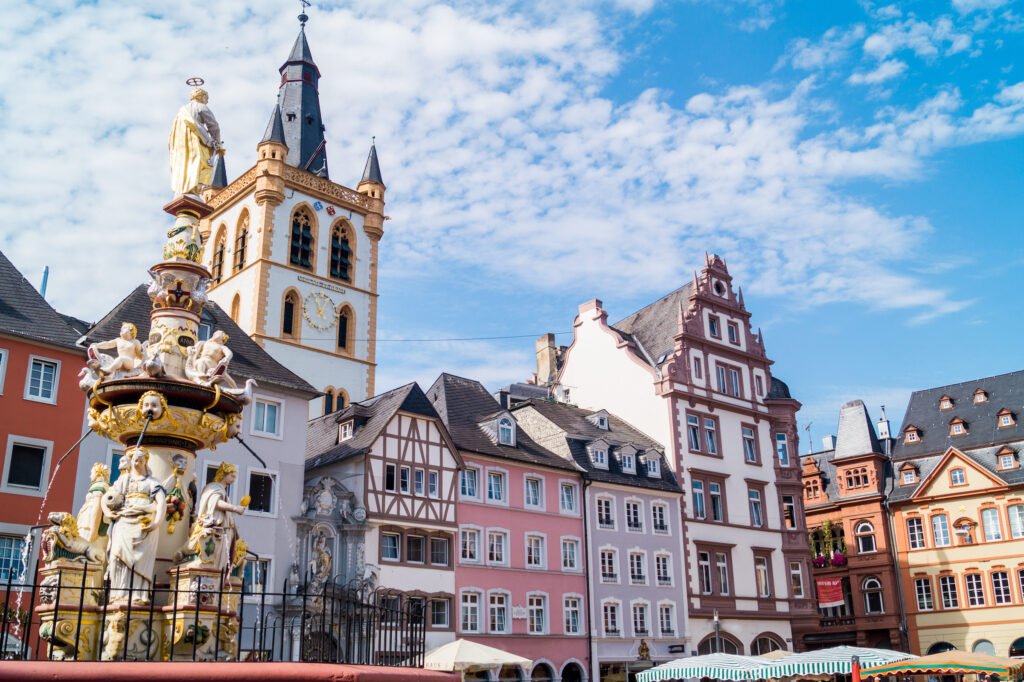
Trier’s market square is the real center of the city. The Hauptmarkt is a major transport hub and a vibrant, colorful market square. In the middle of a large square, placed on a pedestal, stands a five-meter-high market cross consisting of an antique granite column, considered a symbol of sovereignty.
However, it is only a replica – the original is in the Simeonstift Museum. Opposite the market cross is the Petrusbrunnen (St. Peter’s Fountain) from 1595, on top of which stands the city’s patron saint, Saint Peter. Stroll through the city center and visit street cafés and restaurants, or take advantage of the numerous shopping attractions. An atmospheric central square with a market square surrounded by richly decorated medieval buildings in various colors.
5. Basilica Constantine
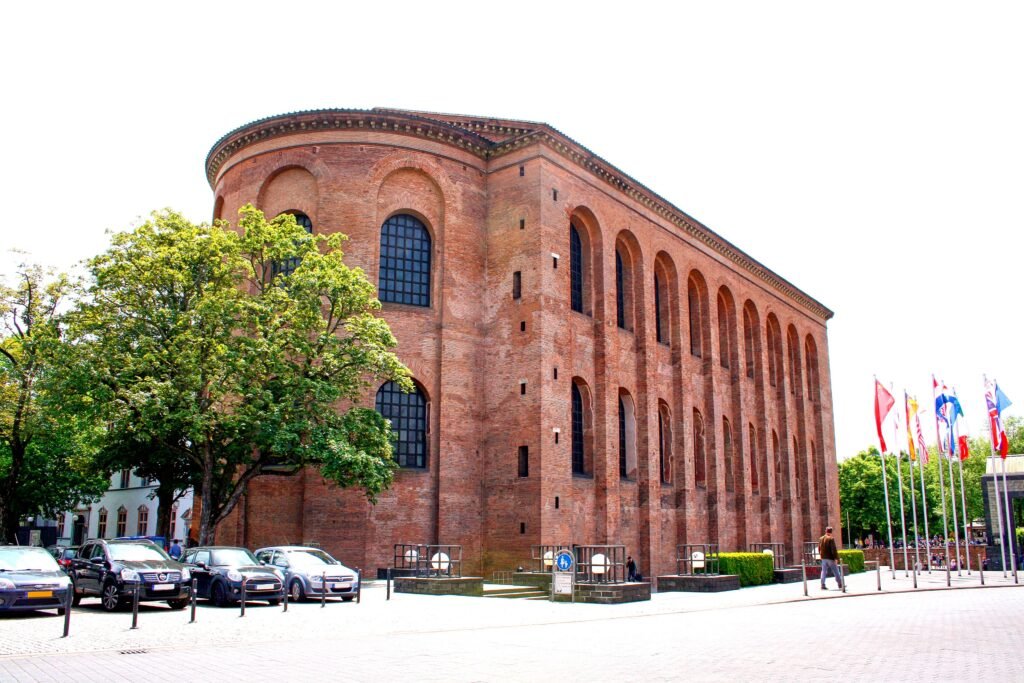
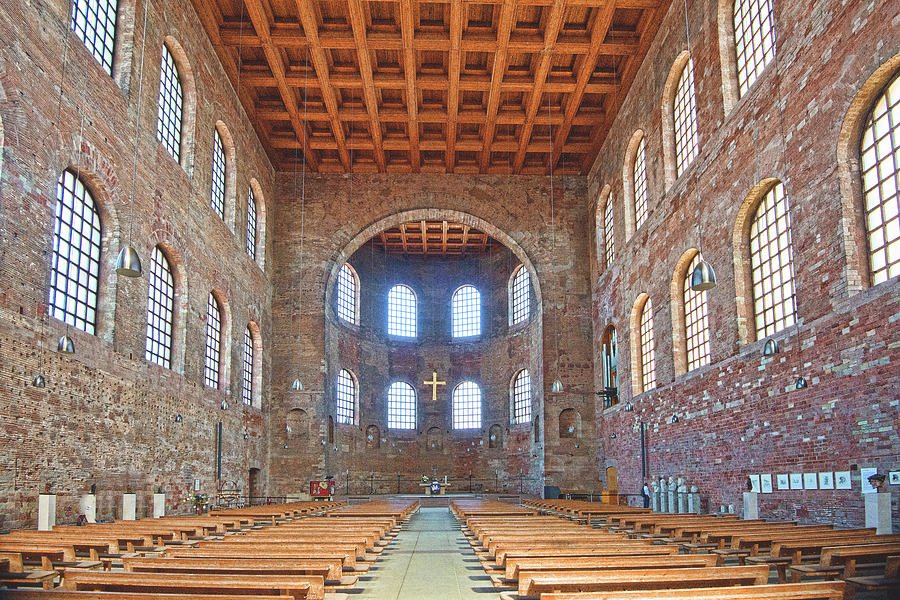
The Basilica of Constantine in Trier is a remnant of this city’s prominent Ancient Roman history. Basilica of Constantine history The Aula Palatina was added to the imperial palace around by Constantine I the Great, who took over Trier as his residence from his father Constantius I Chlorus.In the fifth century, the Basilica of Constantine was destroyed by invading Germanic forces, but now stands restored.
6. Kaiserthermen

The Imperial Baths in the south of a large area containing large buildings during the time of Constantine the Great (circa 275-337, Roman Emperor 306-337). The ruins of the hot bath room (Caldarium) and the underground heating system have survived to this day. The Imperial Baths, along with other monuments of Roman Trier, were included on the UNESCO cultural heritage list. The Imperial Roman baths near the RLM were the largest in Trier. You can visit the large complex, including the basement.
7. Roman Amphitheater In Trier
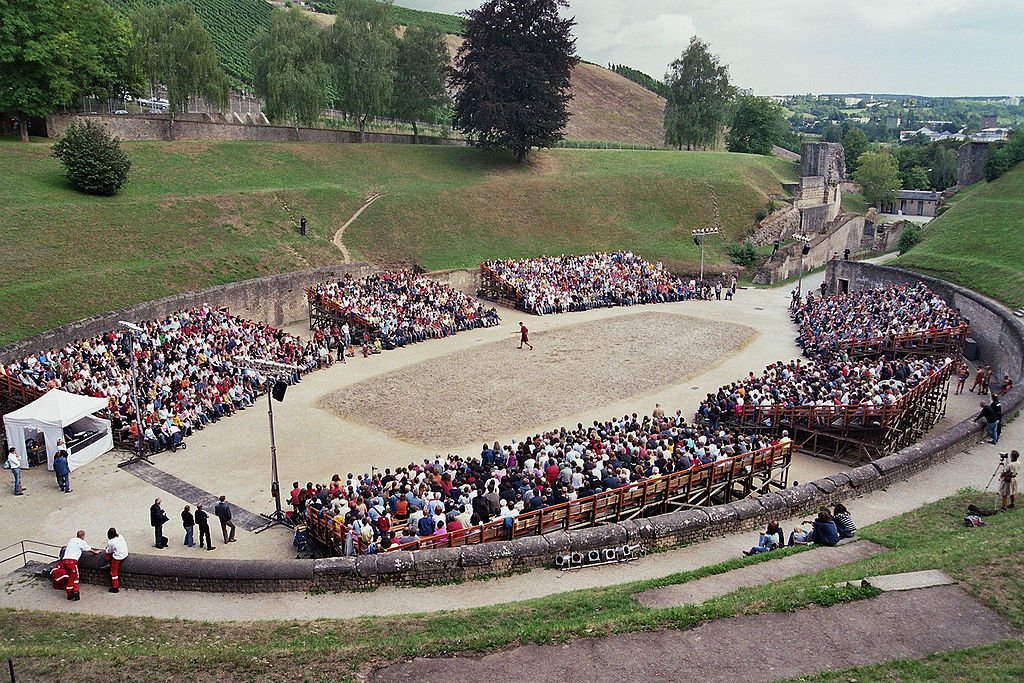
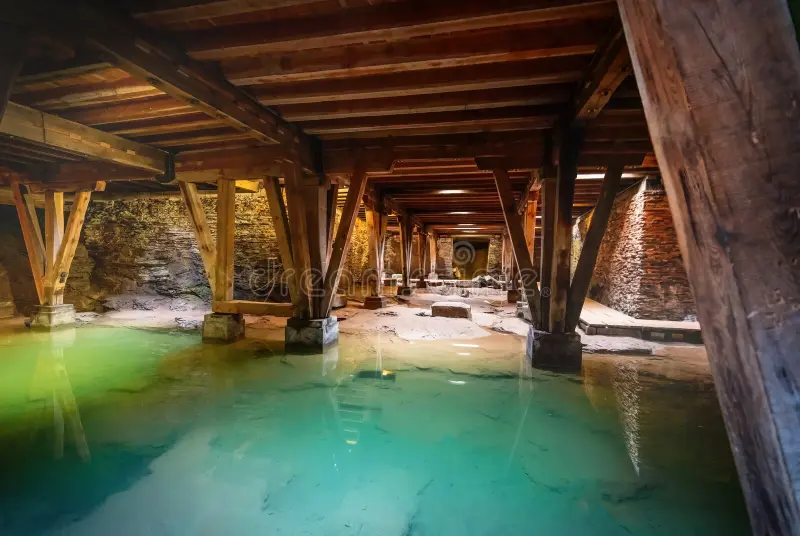

The Roman Amphitheater of Trier, known locally as the Amphitheatre, is a testament to the greatness of ancient Roman engineering and culture. Built in the 2nd century AD, this magnificent structure once could accommodate up to 20,000 spectators, making it the focal point of entertainment and social life in the ancient city.
8. Roman Bridge In Trier (Römerbrücke)

Trier’s Roman Bridge is a marvel of ancient engineering that has stood the test of time as one of the oldest standing Roman bridges in the country. This bridge, spanning the Moselle River, dates back to the 2nd century AD and consisted of nine massive pillars built between 142 and 150 AD. using durable black basalt from the Eifel Mountains. The bridge’s original wooden truss supported heavy traffic with a clearance of 14 meters, allowing ships to pass without lowering their masts.

9. Rhineland State Museum Trier
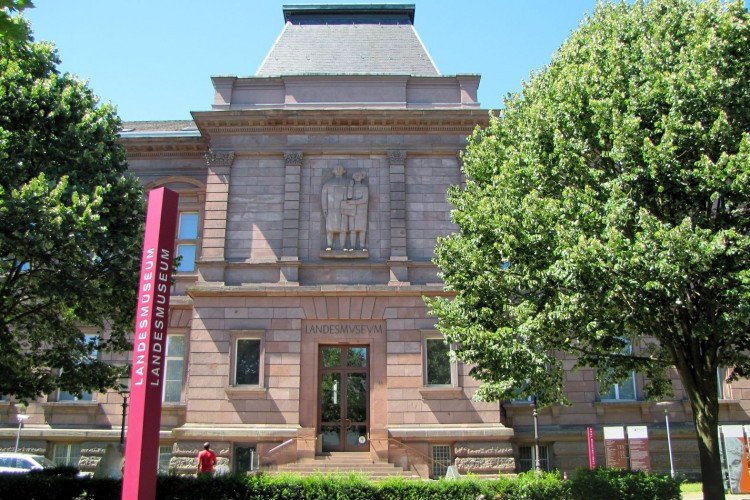

The Archaeological Museum in Trier is one of the most important archaeological museums in Germany. Its collection covers prehistoric times, the Roman Empire, the Middle Ages, the Baroque period and everything in between. Explore the Rhineland State Museum Trier, a to ancient history filled with Roman artifacts, stunning mosaics, and medieval treasures.
10. Karl Marx House
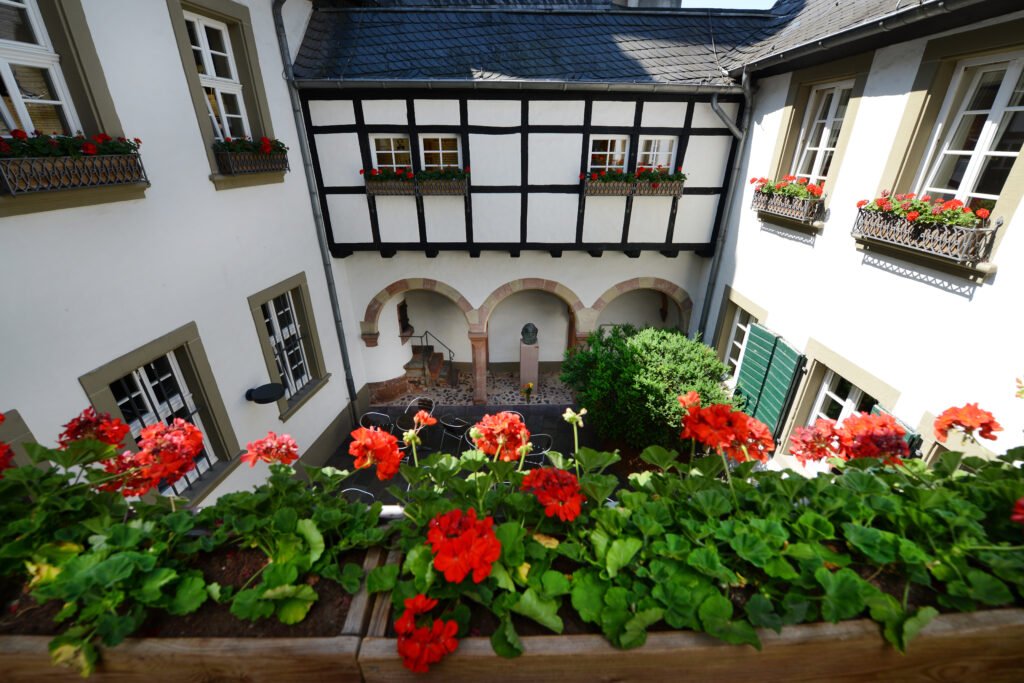

Visit the only museum dedicated to the life and work of Karl Marx. Discover life in the 19th century, the creation of his works, and the worldwide use of his theories to this day. The Karl Marx House Museum is a biographical museum. In 1818, Karl Marx, the father of Marxism, who influenced both modern socialism and communism, was born in this house.
11. Electoral Palace
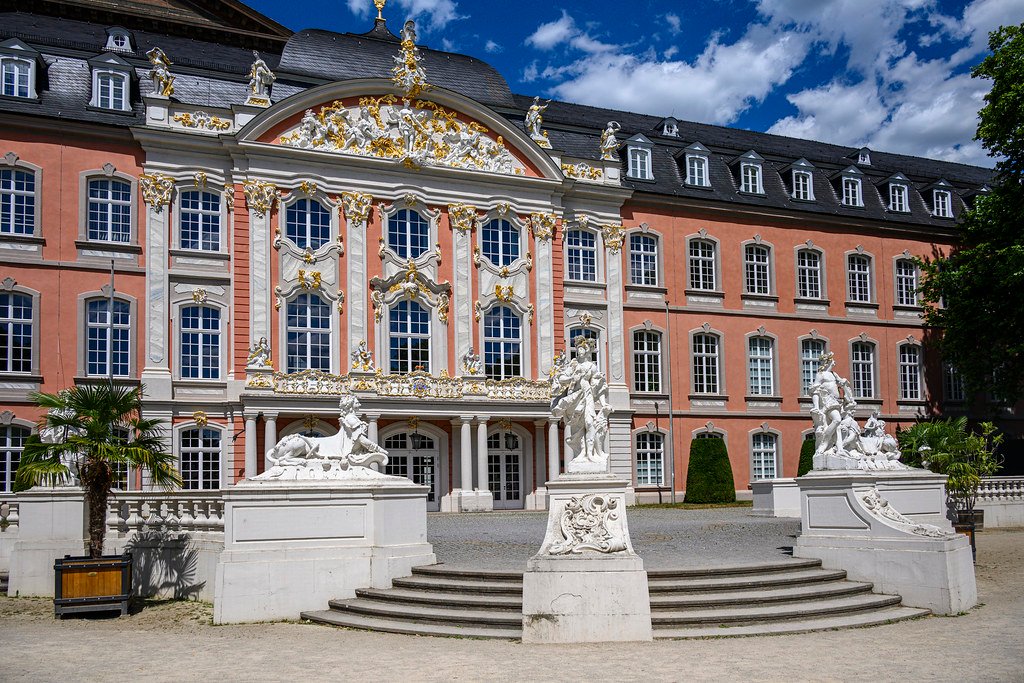

The Electoral Palace in Koblenz was the residence of the last archbishop and elector of Trier, Clement Wenceslas of Saxony, who commissioned its construction in the late 18th century. In the mid-19th century, the Prussian Crown Prince (later Kaiser Wilhelm I) had his official residence there when he was military governor of the provinces of Rhine and Westphalia. It currently houses various federal government offices.
